How to plant
How to plant plants, shrubs, or even trees is a topic which can be simplified to a basic technique that can be applied to most planting situations in your garden. Fundamentally, you follow the same procedure whether you are dealing with a small bedding plant, or a much larger tree. If you are worried about the ground conditions, don’t be, as soil doesn’t need to be incredibly rich for the majority of plants to thrive, but it does need to be well drained, contain enough organic matter to stop it from drying out, and to encourage natural organisms. Below are my main considerations when deciding how to plant up a garden.
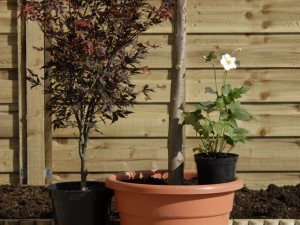 |
1. Procedures are similar for most plants but try to avoid bad planting conditions, when the soil is either very wet or very dry. |
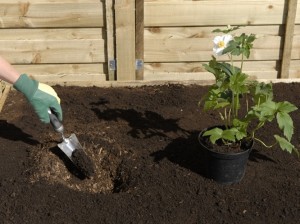 |
2. Make the planting hole wide and deep enough to allow the roots to spread. Use a trowel for small to medium-sized plants, and for larger plants a spade. |
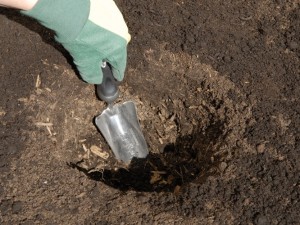 |
3. Good soil preparation before you plant is important. Add nutrient-rich planting compost to feed and improve the texture of the soil. |
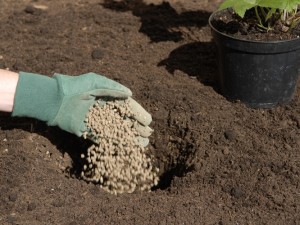 |
4. Once the plant is planted, only superficial cultivation will be possible, so consider adding slow-release concentrated fertiliser before you plant. |
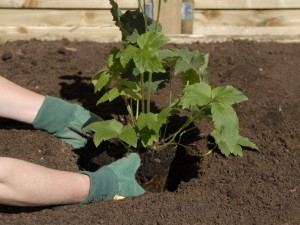 |
5. Carefully remove the pot and place the plant in the hole so that the top of the root ball is at the same level as the surrounding ground. |
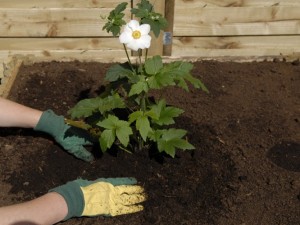 |
6. Make sure that the root ball is securely planted. Loose soil will quickly dry out and the plant will not grow well. Firmly but carefully press down all around the plant. |
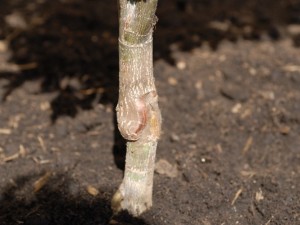 |
7. If a plant has been grafted, ensure that the graft is well above soil level. Grafting is a technique used to propogate choice shrubs and trees onto robust root stock. |
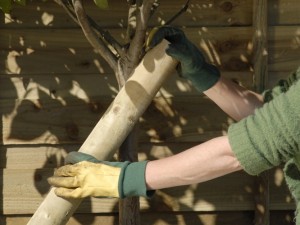 |
8. For trees, firm staking is needed to encourage strong root development. Position the stake so that the prevailing wind will push the tree from it. |
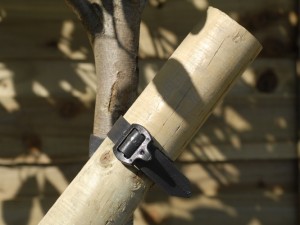 |
9. Secure the stake to the tree with a tree tie. Make sure that it is not pulled too tightly, or it could cause damage to the bark. |
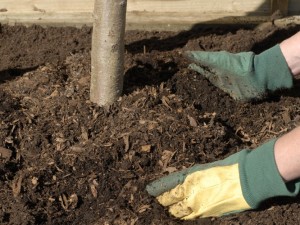 |
10. Backfill with soil and compost and firm it thoroughly around the roots after planting. Use you feet rather than your hands for larger plants. |
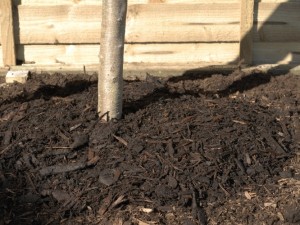 |
11. Once planted, many shrubs and trees make roots close to the surface. Cover the area with mulch to conserve moisture, reduce weeds, and enhance growth. |
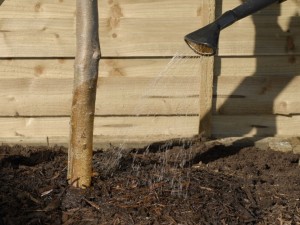 |
12. Water thoroughly. Keep plants well watered, with around 25 litres a week per shrub and 50 litres a week per tree, as they take many months to establish. |
Planting tips
- Newly planted shrubs, trees and plants ideally need to be fed with an all-purpose feed for foliage and roots every week in the summer.
- To give plants a headstart, gently tease out roots at the edge of the root ball when the compost is moist.
- Before you plant, try to eliminate persistent weeds such as couch grass, ground elder and bindweed by digging, forking or hoeing.
- Choose plants suitable for your soil. For example, plants such as azaleas, camellias and rhododendrons prefer acid soil conditions. Others, such as silver leafed plants, prefer hot, dry, sunny positions. Plant labels always offer guidance. Check your soil type with a soil tester.
- Initial soil preparation should be as thorough as possible. Once planted, most borders will not be disturbed for years and it will only be possible to carry out superficial cultivation and feeding.
- Generally, it is most effective to plant irregular groups of three or five plants. Tall plants should go at the back of the border and shorter varieties at the front, although it can be effective to bring groups of taller plants forward as a screen or to break up a scheme.
- Choose plants that have a long flowering season so that your planting is interesting and offers an impressive visual impact throughout the season. Consider mixed plantings of small trees, shrubs, herbaceous plants, bulbs and annuals, in soil where all types of plant are suitable, to create a pleasing, complementary display.
- In a new garden, it is best to delay the planting of herbaceous borders for at least a year, and to use the ground for vegetables and annuals during the first season. In this way, the ground can be dug twice and will be in much better condition when it is permanently planted in the second season.
- Save money by buying smaller plants that will grow quickly once they are planted. You may not get instant impact, but young trees especially will establish more quickly than more mature ones.
